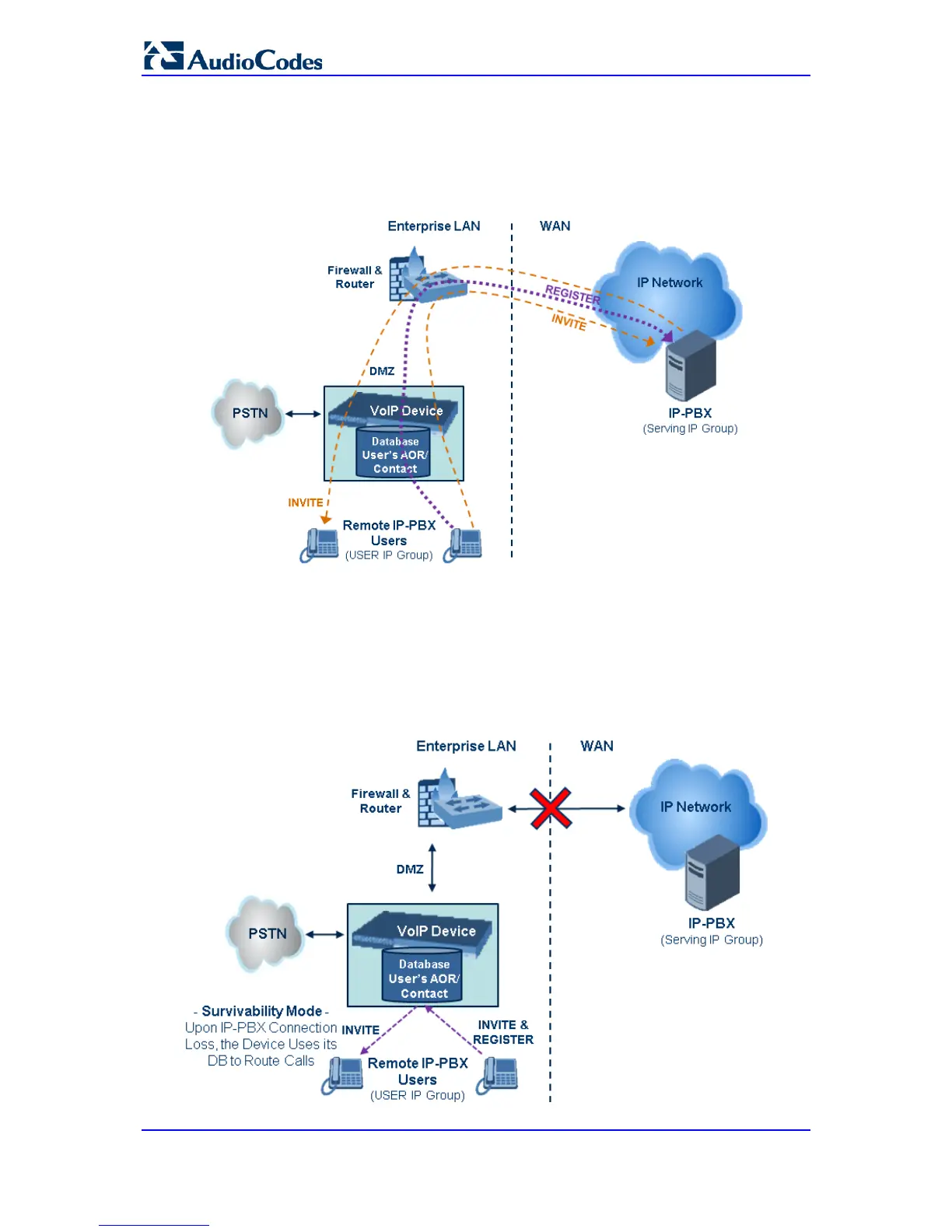401/407 responses, if needed, is done by the Serving IP Group (e.g., IP-PBX). The device
forwards these responses directly to the remote SIP users. For a call to a registered
remote user, the device searches its dynamic database using the Request URI for an entry
that matches a registered AOR or Contact. Once an entry is found, the IP destination is
obtained and a SIP request is then sent to the user.
Figure 22-2: IP-to-IP Routing/Registration/Authentication of Remote IP-PBX Users (Example)
The device also supports the IP-to-IP call routing Survivability mode feature (see the figure
below) for User-type IP Groups. The device stores in its database REGISTER messages
sent by the clients of the User-type IP Group. If communication with the Serving IP Group
(e.g., IP-PBX) fails, the User-type IP Group enters into Survivability mode in which the
device uses its database for routing calls between the clients of the User-type IP Group.
The RTP packets between the clients traverse through the device. When the Serving IP
Group is available again, the device returns to normal mode, sending INVITE and
REGISTER messages to the Serving IP Group.
Figure 22-3: IP-to-IP Routing for IP-PBX Remote Users in Survivability Mode (Example)

